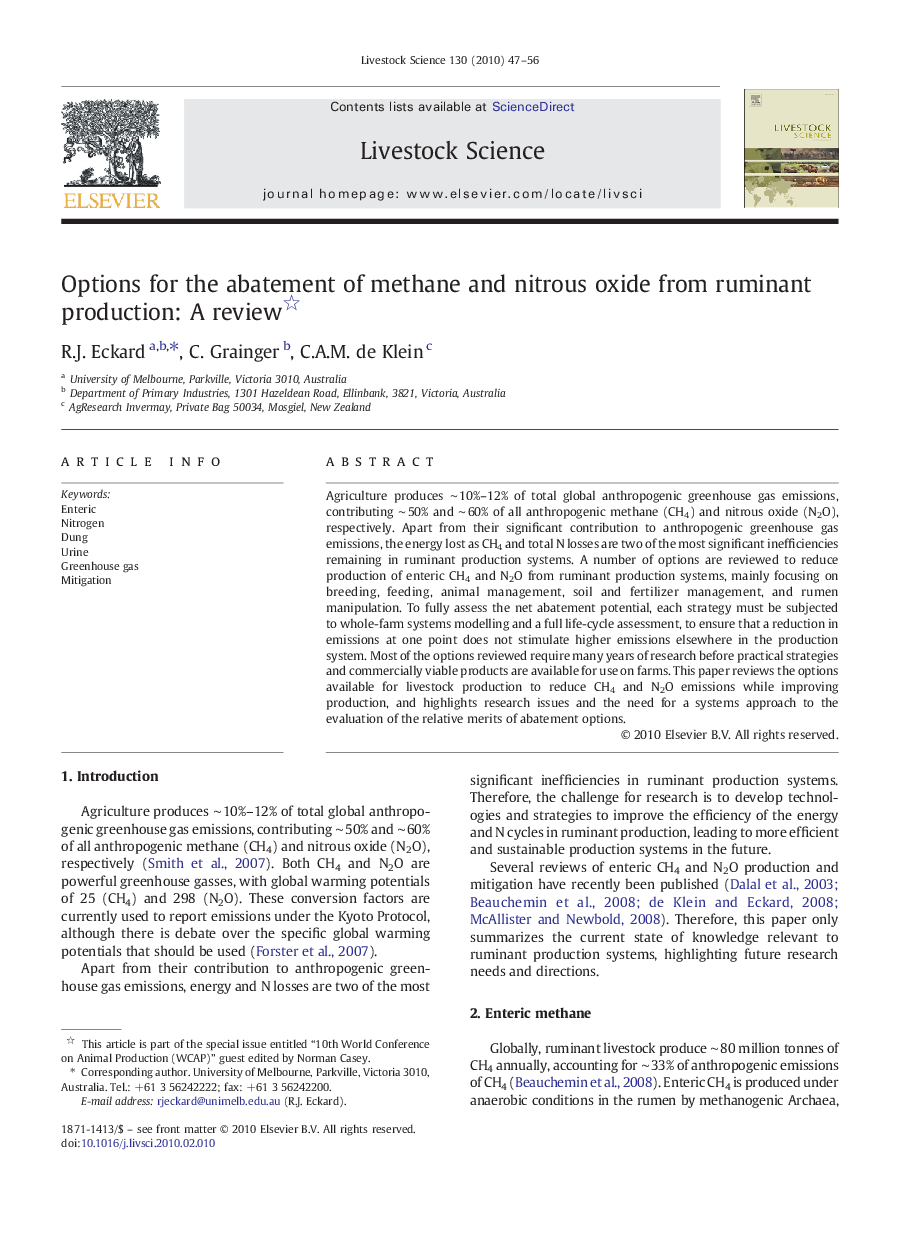| Article ID | Journal | Published Year | Pages | File Type |
|---|---|---|---|---|
| 2447872 | Livestock Science | 2010 | 10 Pages |
Agriculture produces ∼ 10%–12% of total global anthropogenic greenhouse gas emissions, contributing ∼ 50% and ∼ 60% of all anthropogenic methane (CH4) and nitrous oxide (N2O), respectively. Apart from their significant contribution to anthropogenic greenhouse gas emissions, the energy lost as CH4 and total N losses are two of the most significant inefficiencies remaining in ruminant production systems. A number of options are reviewed to reduce production of enteric CH4 and N2O from ruminant production systems, mainly focusing on breeding, feeding, animal management, soil and fertilizer management, and rumen manipulation. To fully assess the net abatement potential, each strategy must be subjected to whole-farm systems modelling and a full life-cycle assessment, to ensure that a reduction in emissions at one point does not stimulate higher emissions elsewhere in the production system. Most of the options reviewed require many years of research before practical strategies and commercially viable products are available for use on farms. This paper reviews the options available for livestock production to reduce CH4 and N2O emissions while improving production, and highlights research issues and the need for a systems approach to the evaluation of the relative merits of abatement options.
